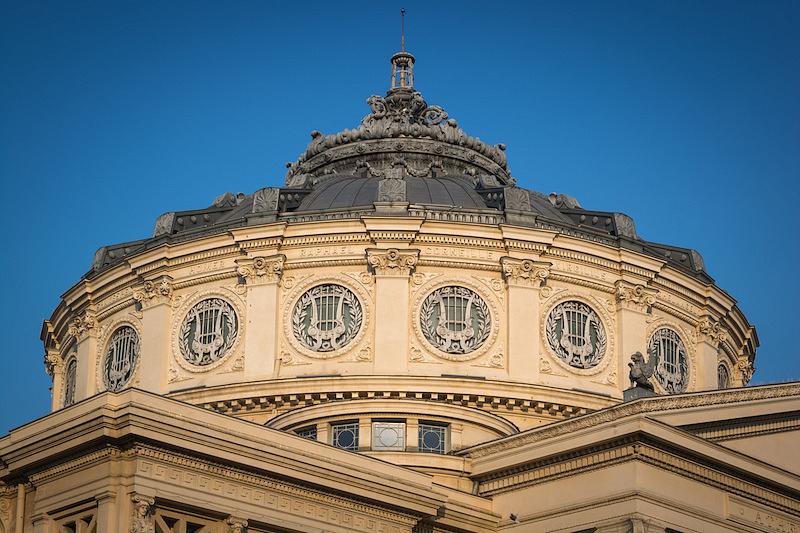Bucharest Centennial: Albert Galleron, one of the first French architects who beautified the capital

Romania-Insider.com has started a series of articles about Bucharest landmarks of architecture or history, which have witnessed the last century of what is now the Romanian capital, and noteworthy people which have helped build the Romanian capital as it is today. This project is supported by the Bucharest City Hall through the Public Monuments and Touristic Heritage Administration (AMPT), within the cultural program Bucharest-Centennial.
A French architect who designed two landmark buildings in Romanian capital Bucharest was among those at the forefront of the eclectic architectural style which took over the city at the end of the 19th century.
Albert Galleron is the architect best known for having designed the Romanian Athenaeum in Bucharest (opening picture), which became a center stage for the local and international classical music. The other well – known building he designed in Bucharest, together with another French architect Cassien Bernard is the old National Bank of Romania Palace.
His work, however, spanned beyond these two famous buildings and opened the doors to many other foreign architects, most of whom French, who designed some of Bucharest’s architectural masterpieces. They all influenced local architecture and brought in the neo-classic and eclectic styles of modern Romania. Their work also inspired many Romanian architects to study abroad, even in France. The young Romanians with studies abroad brought the Union spirit back to their home country, which was one of the driving forces that led to the Great Union in December 1918. Paris was even at the core of the pro-Romanian and pro-Union activities at the time.
Galleron was born in Paris long before Romania’s Great Union – in 1846 – and studied at the École des Beaux-Arts in the French capital. During his career as an architect, he has changed his residence several times. The architect has even lived in Romania for a while, until the end of the 19th century. Here, he designed several public and private buildings. More than a century later, Romanian architecture students are studying his impressive designs. The Romanian Athenaeum, his Romanian masterpiece, hosted in 1919 the conference of leading Romanians who had voted a year earlier to ratify the unification of Bessarabia, Transylvania, and Bukovina with the Romanian Old Kingdom.
The French architect was selected to design the Athenaeum at the recommendation of Charles Garnier, the author of the Palais Garnier opera house in Paris. The building was completed in February 1888.
Albert Galleron was also in charge of the architecture of the old National Bank of Romania Palace, alongside fellow French architect Cassien Bernard. The construction of the building, which continues to be one of the most impressive in the capital city, began in July 1884. It was carried out under the guidance of Romanian architect-engineer Nicolae Cerchez. The building located in Bucharest’s Old Town was constructed in the eclectic style of the late 19th century, with some neo-classical elements.
The other architectural projects of Albert Galleron in Bucharest were mainly houses, including the house of Romanian surgeon Nicolae N. Turnescu (built 1893-1895), the Eliza Filipescu House (built in 1884 together with Paul Gottereau), the Iacob Negruzzi House (built in 1889), the A. Gaillac House (1891), and the C. Costescu-Comăneanu House (1889). However, he also signed several other buildings across Romania, such as the National Bank of Romania branch in Galati and the Ghica Palace in the town of Comănești, in Bacău county.
After 1900, Albert Galleron worked on several architectural projects in France and Spain. His works of an eclectic architecture have enriched the Romanian capital and became milestones of the period’s architecture.
Sources: Bnr.ro, E-architecture.ro, Dictionary of modern Romanian architecture, Zf.ro
editor@romania-insider.com
Photo source: Adobe Stock
















